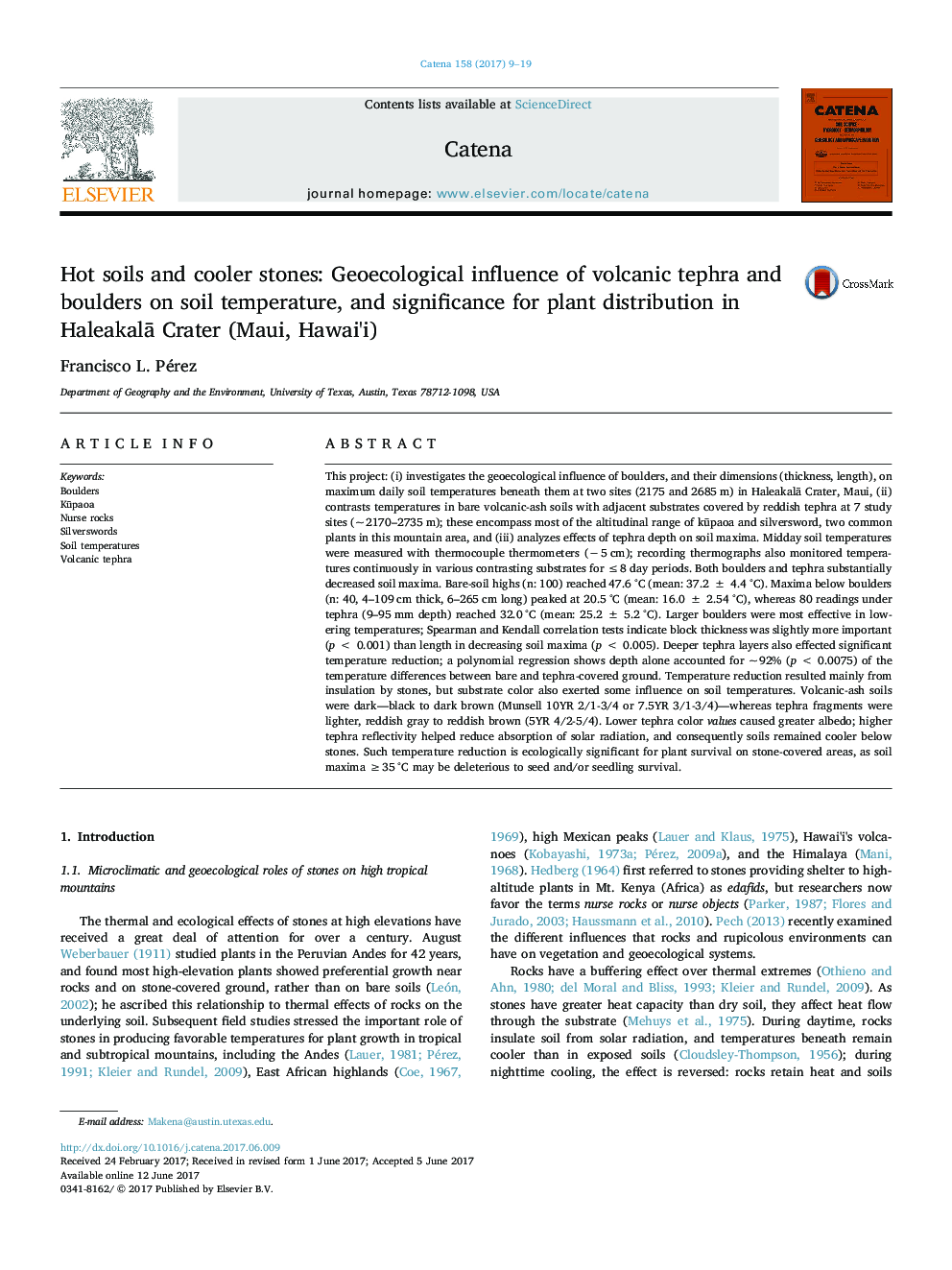| کد مقاله | کد نشریه | سال انتشار | مقاله انگلیسی | نسخه تمام متن |
|---|---|---|---|---|
| 5769886 | 1629196 | 2017 | 11 صفحه PDF | دانلود رایگان |

- Bare soils were warmer (37.2 °C) than those under boulders (20.5°) or tephra (25.2°).
- Thicker and/or longer blocks lowered daily soil temperatures more than smaller stones.
- Deeper tephra covers caused a more pronounced temperature reduction than shallow ones.
- Substrate color also affects temperature; dark ash-soils got hotter than light tephra.
- Silverswords and kūpaoa shrubs preferentially grow on the cooler soils next to rocks.
This project: (i) investigates the geoecological influence of boulders, and their dimensions (thickness, length), on maximum daily soil temperatures beneath them at two sites (2175 and 2685 m) in HaleakalÄ Crater, Maui, (ii) contrasts temperatures in bare volcanic-ash soils with adjacent substrates covered by reddish tephra at 7 study sites (~ 2170-2735 m); these encompass most of the altitudinal range of kÅ«paoa and silversword, two common plants in this mountain area, and (iii) analyzes effects of tephra depth on soil maxima. Midday soil temperatures were measured with thermocouple thermometers (â 5 cm); recording thermographs also monitored temperatures continuously in various contrasting substrates for â¤Â 8 day periods. Both boulders and tephra substantially decreased soil maxima. Bare-soil highs (n: 100) reached 47.6 °C (mean: 37.2 ± 4.4 °C). Maxima below boulders (n: 40, 4-109 cm thick, 6-265 cm long) peaked at 20.5 °C (mean: 16.0 ± 2.54 °C), whereas 80 readings under tephra (9-95 mm depth) reached 32.0 °C (mean: 25.2 ± 5.2 °C). Larger boulders were most effective in lowering temperatures; Spearman and Kendall correlation tests indicate block thickness was slightly more important (p < 0.001) than length in decreasing soil maxima (p < 0.005). Deeper tephra layers also effected significant temperature reduction; a polynomial regression shows depth alone accounted for ~ 92% (p < 0.0075) of the temperature differences between bare and tephra-covered ground. Temperature reduction resulted mainly from insulation by stones, but substrate color also exerted some influence on soil temperatures. Volcanic-ash soils were dark-black to dark brown (Munsell 10YR 2/1-3/4 or 7.5YR 3/1-3/4)-whereas tephra fragments were lighter, reddish gray to reddish brown (5YR 4/2-5/4). Lower tephra color values caused greater albedo; higher tephra reflectivity helped reduce absorption of solar radiation, and consequently soils remained cooler below stones. Such temperature reduction is ecologically significant for plant survival on stone-covered areas, as soil maxima â¥Â 35 °C may be deleterious to seed and/or seedling survival.
Journal: CATENA - Volume 158, November 2017, Pages 9-19